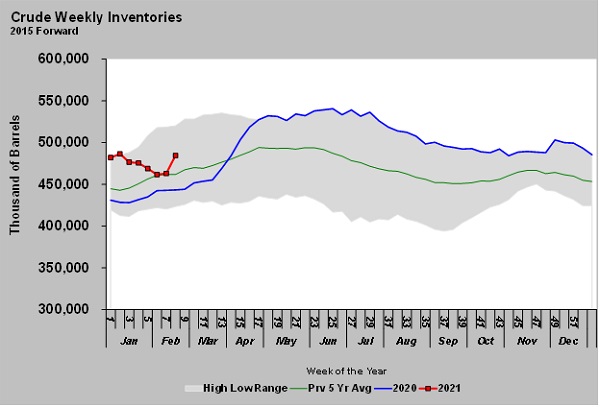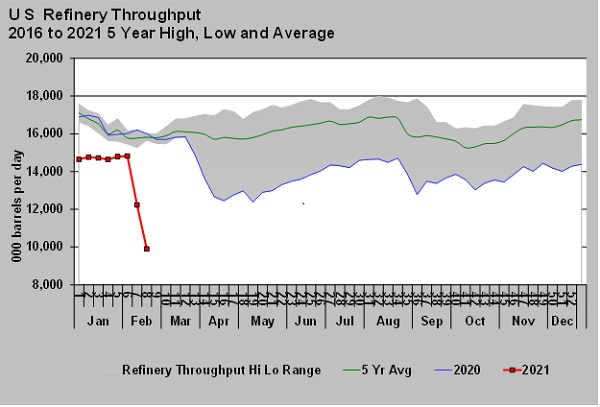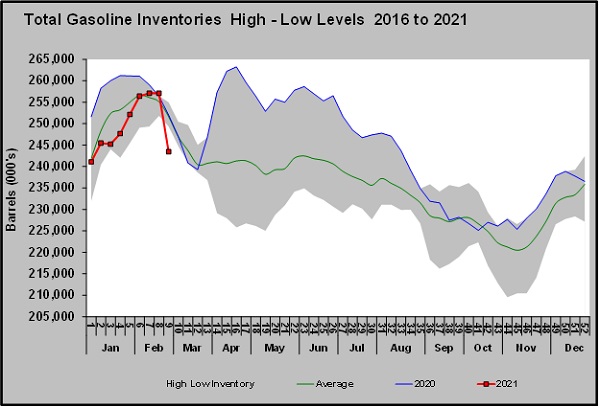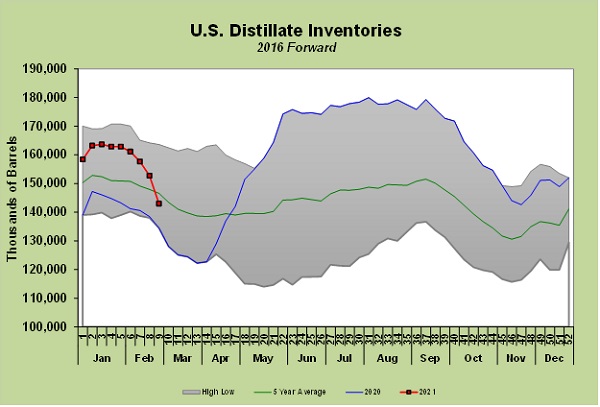Crude prices rise despite inventory build
How do crude prices rise after the U.S. Energy Information Administration (EIA) reports a 21.563-million-barrel increase in crude inventory?
That is a very good question. We are glad it was asked.
First, let’s look at why inventory increased.
Demand for crude primarily comes from refineries and, to a lesser degree, export demand.
Refinery throughput plummeted during the winter storm that moved through the South in mid-February because so much of U.S. refining capacity is located in the areas that were most adversely affected.
During that period, there was an uptick in crude imports of 1.693 million barrels per day (bpd), which helped offset some of the losses in U.S. crude production and resulted in the inventory build.
On the other side of the refinery, refined fuels demand was not nearly as impacted as refinery throughput.
Refineries are still recovering from the winter storm, while refined fuels demand has fully recovered. As a consequence, there were huge draws on refined fuels inventory.
U.S. gasoline inventory declined 13.624 million barrels.
Distillate inventory, which includes heating oil and diesel, was down 9.719 million barrels.
The declines in inventories downstream of the refineries were greater than the decline in crude inventory upstream. Traders became focused on the changes in downstream inventory, causing prices to rise.
But the story for crude was not over last Wednesday after the EIA reported. Crude got another boost on Thursday from producer group OPEC+.
OPEC+ has been producing below its benchmark production rates to boost crude prices. Saudi Arabia had even voluntarily cut an extra 1 million bpd in February and March. Leading up to the OPEC+ meeting, there were expectations that the voluntary cut would end in April. There was talk that the group was planning another 500,000-bpd increase in production on top of the end of Saudi Arabia’s voluntary cut.
What happened was the group allowed member Russia to increase production 130,000 bpd, and the rest of the producers kept production the same. That included Saudi Arabia rolling its voluntary cut into April.
Crude, which had been trending lower, jumped $1.53 per barrel on the big refined fuels draw last Wednesday. Then, it jumped $2.55 on the OPEC+ surprise. As of last Friday, West Texas Intermediate (WTI) was up another $2.22 at $66.05 per barrel, perhaps due to the combination of the two events.
Despite the big gains in crude prices since November (WTI up $35.76 to $66.05 per barrel), U.S. crude production has not recovered. Even without the influences of the winter storm, it was running 2.1 million bpd below its peak.
U.S. producers were really hurt by the low prices following the pandemic. Most are being forced by creditors and investors to focus on profit rather than production growth.
The lack of improvement in production given the significant gains in crude’s price is telling about the health of the U.S. energy sector. Further, the Biden administration is adversarial toward the hydrocarbon industry. Many are predicting U.S. production will never recover to pre-pandemic levels. Others believe it will be years before it occurs.
This has OPEC+ pushing the envelop on crude’s price. The threat of higher crude prices that will also influence propane’s price is very real. Along with tighter propane fundamental trends, crude trends are pointing toward a higher price environment ahead.
Call Cost Management Solutions today for more information about how client services can enhance your business at 888-441-3338 or drop us an email at info@propanecost.com.




















